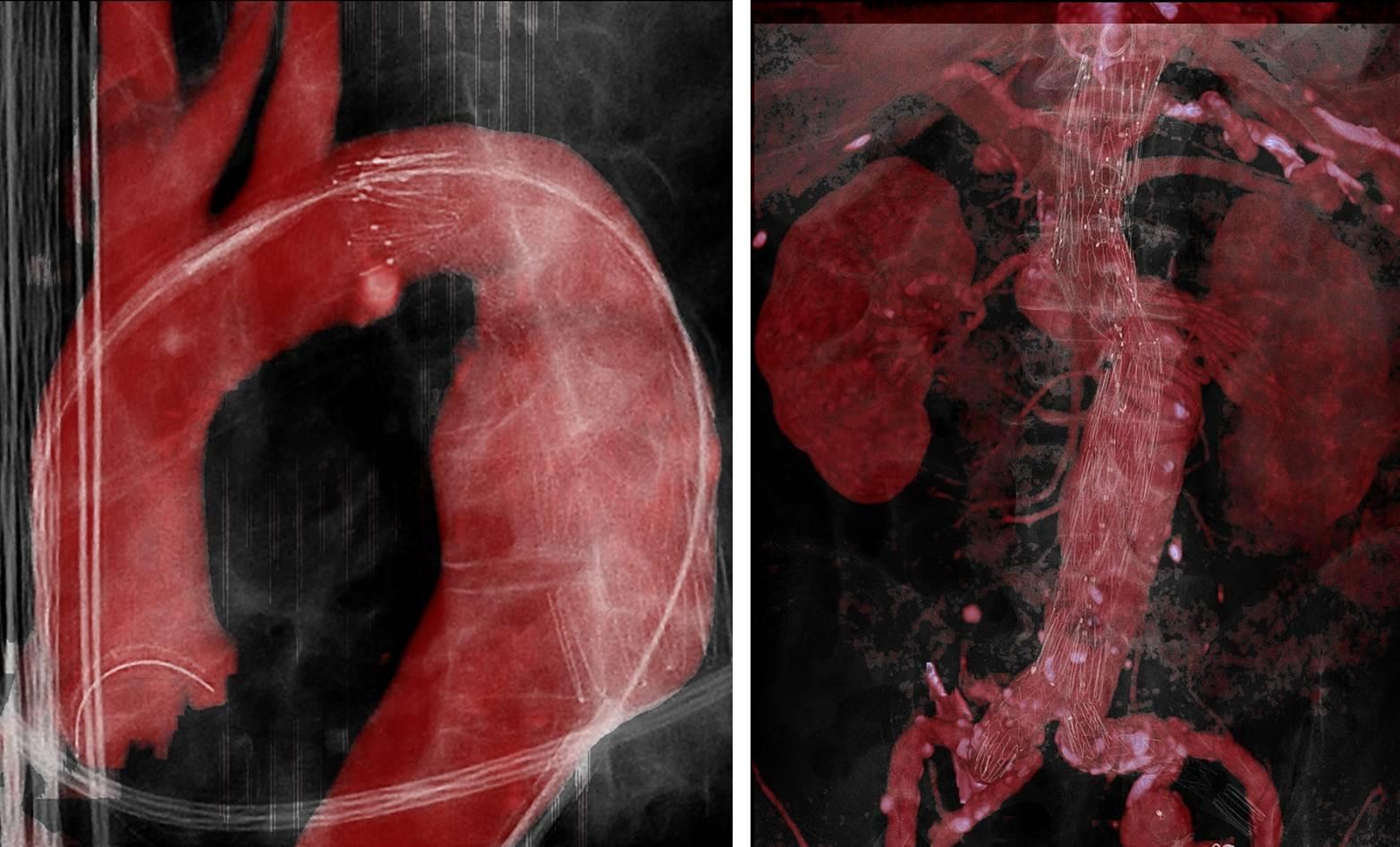CTA with fluoroscopy image fusion guidance in endovascular complex aortic aneurysm repair
Prof. dr. M.W. de Haan
Voorzitter(s): drs. J.M. Martens, interventieradioloog, Rijnstate ziekenhuis, Arnhem & Drs. R.C. van Nieuwenhuizen, vaatchirurg, St. Lukas/Andreas Ziekenhuis, Amsterdam
14:00 - 14:10u
in Atrium zaal
We evaluated the use of CTA with fluoroscopy image fusion guidance in endovascular complex aortic aneurysm repair. Image fusion technology proved to significantly reduce procedure time and iodinated contrast material. A non-significant reduction in fluoroscopy time was observed. Respiration related vessel displacement and straightening of elongated vessel segments by stiff devices are currently the main limitations in fusion image overlay accuracy.
Objectives
To evaluate the effect of intraoperative guidance by means of live fluoroscopy image fusion with computed tomography angiography (CTA) on iodinated contrast material volume, procedure time and fluoroscopy time in endovascular thoraco-abdominal aortic repair.
Design
CTA with fluoroscopy image fusion road-mapping was prospectively evaluated in patiŽnts with complex aortic aneurysms who underwent fenestrated and / or branched endovascular repair (FEVAR / BEVAR). Total procedural iodinated contrast material volume, overall procedure time and fluoroscopy time were compared between the fusion group (n = 31) and case controls (n = 31). Reasons for potential fusion image inaccuracy were analyzed.
Results
Fusion imaging was feasible in all patiŽnts. Fusion image road-mapping was used for navigation and positioning of the devices and catheter guidance during access to target vessels. Iodinated contrast material volume and procedure time were significantly lower in the fusion group compared to case controls (159 ml (95% CI: 132 ml; 186 ml) versus 199 ml (95% CI: 170 ml; 229 ml), p = 0.037 and 5.2 hours (95% CI: 4.5 h; 5.9 h) versus 6.3 hours (95% CI: 5.4 h; 7.2 h), p = 0.022). No significant differences in fluoroscopy time were observed (p = 0.38). Respiration related vessel displacement, vessel elongation and displacement by stiff devices as well as patiŽnt movement were identified as reasons for fusion image inaccuracy.
Conclusion
Image fusion guidance provides an added value in complex endovascular interventions. The technology significantly reduces iodinated contrast material dose and procedure time.
†


